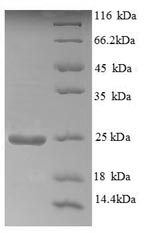Can you please provide the following:
1)For catalog: CSB-EP001858HU (all expression systems):
a.Has the tag been removed successfully for any expression systems? If yes, which ones?; b.Do you have any metabolism studies related data? Or knowledge on using this protein in metabolism studies? What co-factors are involved? What positive control can I use? (I don’t expect you to know this Vivian but thought I’d ask just in case you may.)
2)I am also looking for the following isoforms you may have, 2,3,4,etc. :
a.Recombinant Human Aldehyde oxidase 2 (full-length); b.Recombinant Human Aldehyde oxidase 3 (full-length); c.Recombinant Human Aldehyde oxidase 4 (full-length)
If you have these proteins, can you please also provide the same information requested above for AO a.Sequence; b.Tag type; c.Tag position; d.Sizes and formats; e.Has the tag been removed successfully for any expression systems? If yes, which ones?; f.Do you have any metabolism studies related data?...




